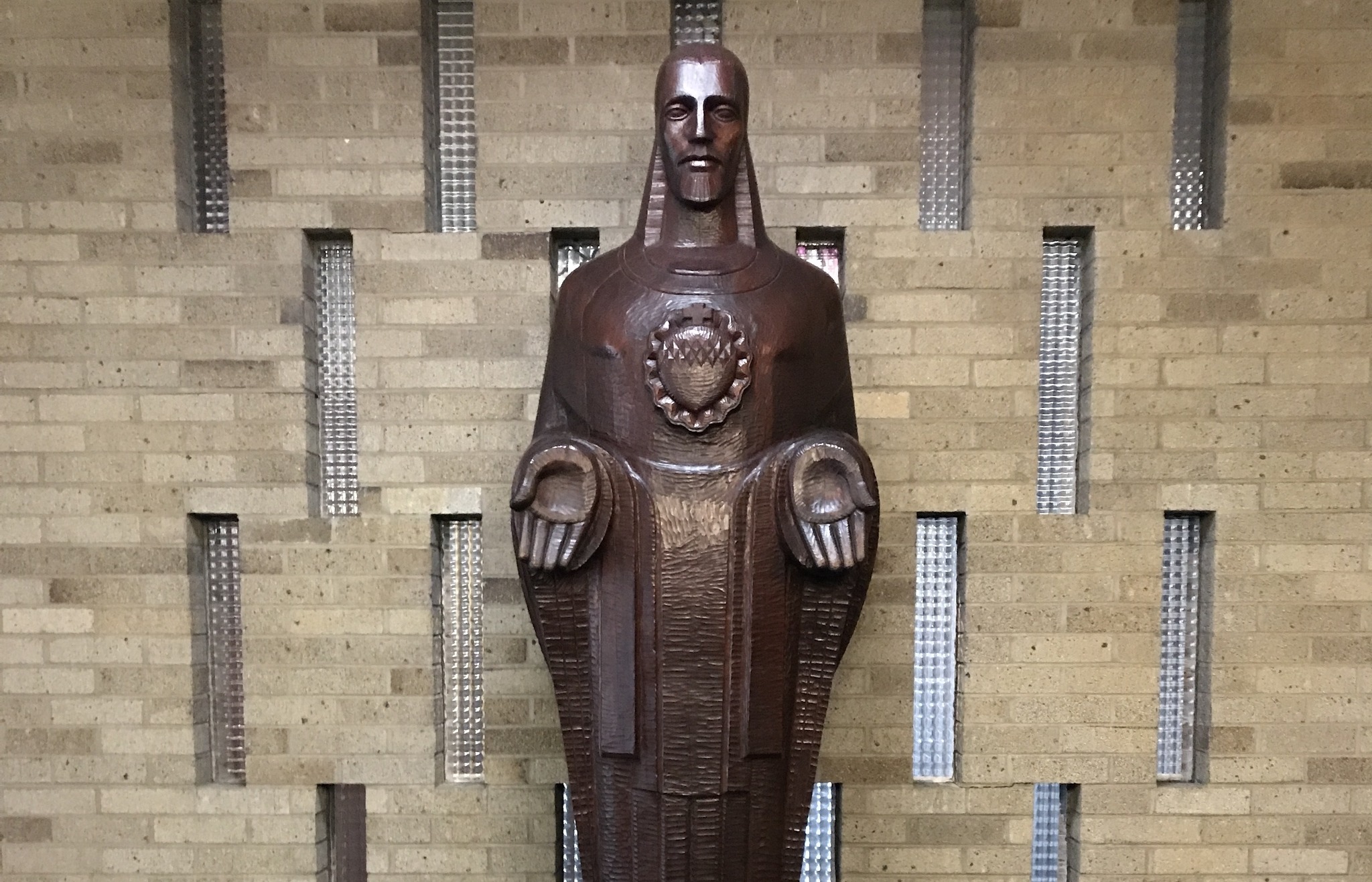Earlier this week, a secret recording of Martha-Ann Alito, the wife of Supreme Court Justice Samuel Alito, was released in which she says, “I want a Sacred Heart of Jesus flag because I have to look across the lagoon at the Pride flag for the next month.” According to the New York Times, Mrs. Alito wanted to fly the flag as a “retort” to a Pride flag flown by a neighbor. In the secretly recorded conversation, Mrs. Alito goes on to threaten, “You come after me, I’m going to give it back to you.”
I felt a range of emotions when I read Mrs. Alito’s comments, but mostly, I was disheartened and saddened that a fellow Catholic seemed to weaponize a devotion meant to signify God’s love against a community that so longs for that love and acceptance from their church.
If every public expression of a message that we disagreed with rose to the level of justifying a tit-for-tat response, the fabric of our diverse and pluralistic society would disintegrate quickly. Neighbors don’t always agree on issues, and when someone flies a widely accepted seasonal flag, passive-aggressive retaliation is not particularly neighborly or civil. As an LGBTQ Catholic living in a diverse community, I’m grateful that my non-Christian neighbors don’t feel compelled to drown out the message of my Christmas decorations with their own symbols, designed to drown out or oppose my own.
The notion that Catholics should exact some kind of vigilante vengeance when they feel offended or even attacked flies in the face of the Catholic and Gospel values.
Apart from the basic civics lesson, the notion that Catholics should exact some kind of vigilante vengeance when they feel offended or even attacked flies in the face of the Catholic and Gospel values with which I was raised and that I aspire to (and often fall short of) in the practice of my own Catholic faith.
As a gay Catholic, however, I was most especially struck by the notion that the message of the Sacred Heart of Jesus and the Pride flag somehow stand in opposition to each other. Mrs. Alito’s comments are part of a broader trend in recent years in which some Catholics who oppose Pride celebrations seek to raise the profile of this feast day, an effort embraced even by the U.S. Conference of Catholic Bishops.
More than any other quibble I might have with Mrs. Alito’s comment, it’s this one that seems most misguided.
To the contrary, the message of the Sacred Heart of Jesus and the Pride flag seem to me to be highly aligned.
The devotion to the Sacred Heart of Jesus is rooted in the visions of St. Margaret Mary Alacoque, who lived in the 1600s. In her visions, she reported that Jesus would offer her his heart, telling her, “Behold the heart that has so loved humanity.” The devotion to the Sacred Heart grew in response to a form of Jansenism prevalent in the day that suggested that God was cold and detached from human experience. The image of Jesus’s burning heart of love was seen as a reminder that God is with us and dearly loves each of us with great and unremitting passion.
And that’s why the connection of the Sacred Heart to Pride seems so connected to me. At its core, the Pride flag signals to all that love is love. It is a message of universal inclusion and belonging, a message so central to the mission of the church and to communicating God’s love for all people. This message of universal welcome and love is expressed by Pope Francis’s constant exhortation, “Todos, todos, todos!”
The message of the Sacred Heart of Jesus and the Pride flag seem to me to be highly aligned.
Earlier this month, I had the honor of attending the All Are Welcome Mass organized by the LGBTQIA Catholic Collective of Boston at the start of Pride weekend, which happened to coincide with the Feast of the Sacred Heart of Jesus itself. Not coincidentally, in his homily at the Mass, the priest reminded us of the Sacred Heart of Jesus and the message that the most core identity of God is love, love, love.
For LGBTQ Catholics like me, these last few months have been more trying than most.
At one moment, we find ourselves encouraged by a pope who began his pontificate asking, “Who am I to judge?” and who continues to open the door of welcome by ministering to trans people and creating space for priests to offer blessings of couples (even if not of their union or marriage). At the same time, this progress is marred by confusion and hurt as in recent weeks, Pope Francis has cautioned against gay men being admitted to seminaries and has allegedly used homophobic slurs at least two times in conversation.
For people like me, who have chosen to remain within a church that can often feel challenging, Pride offers a chance for us to feel the connection between God’s love and the love, acceptance, inclusion and embrace at the core of the LGBTQ movement.
When fellow Catholics try to use religious devotions and imagery as a political weapon, it is deeply hurtful. When they seem to deeply misunderstand the very essence of a particular religious devotion, it damages not only the objects of their attack—in this case, all LGBTQ people and their allies—but it is also a disservice to the church and its very mission.
When fellow Catholics try to use religious devotions and imagery as a political weapon, it is deeply hurtful.
Devotion to the Sacred Heart is a reminder and invitation to know and feel the love of God in our life. The Pride flag is a secular version of that message, a physical sign hoping to remind us and demonstrate the depth and legitimacy of a love that is fully inclusive and welcoming, that embraces and accepts you for who you are, no matter how you identify.
For those who understand and profess belief in the Sacred Heart, perhaps you might consider flying both the Sacred Heart and the Pride flag in your home this June.




